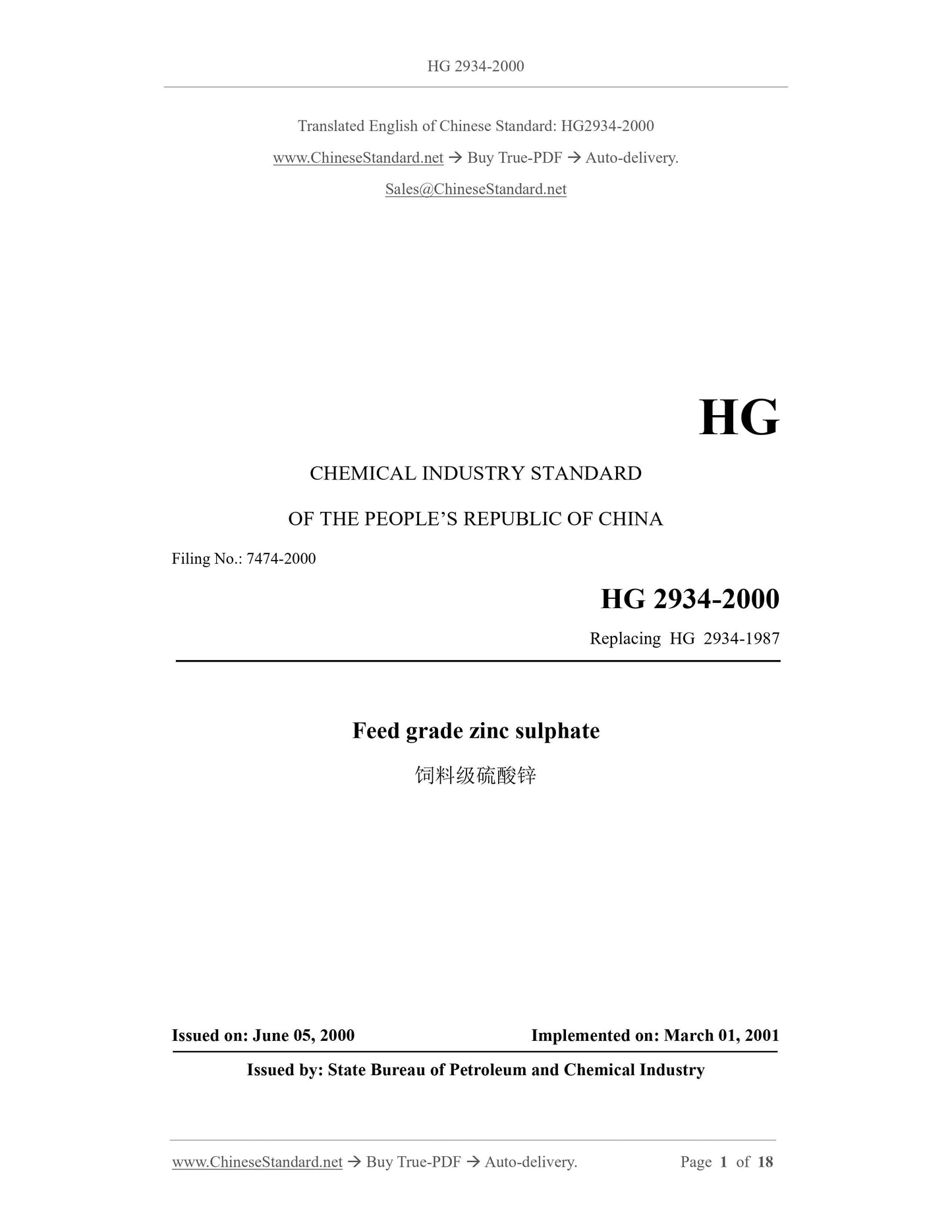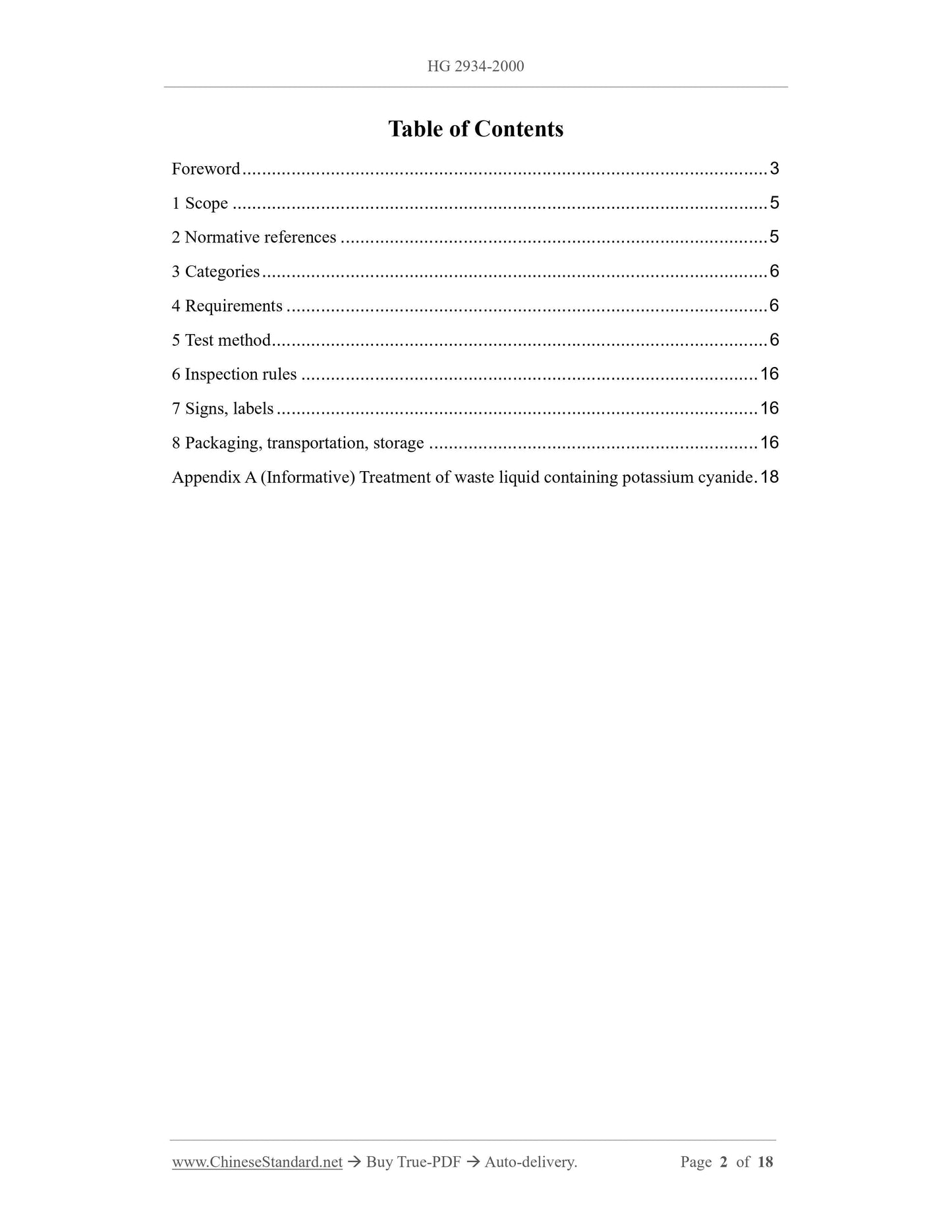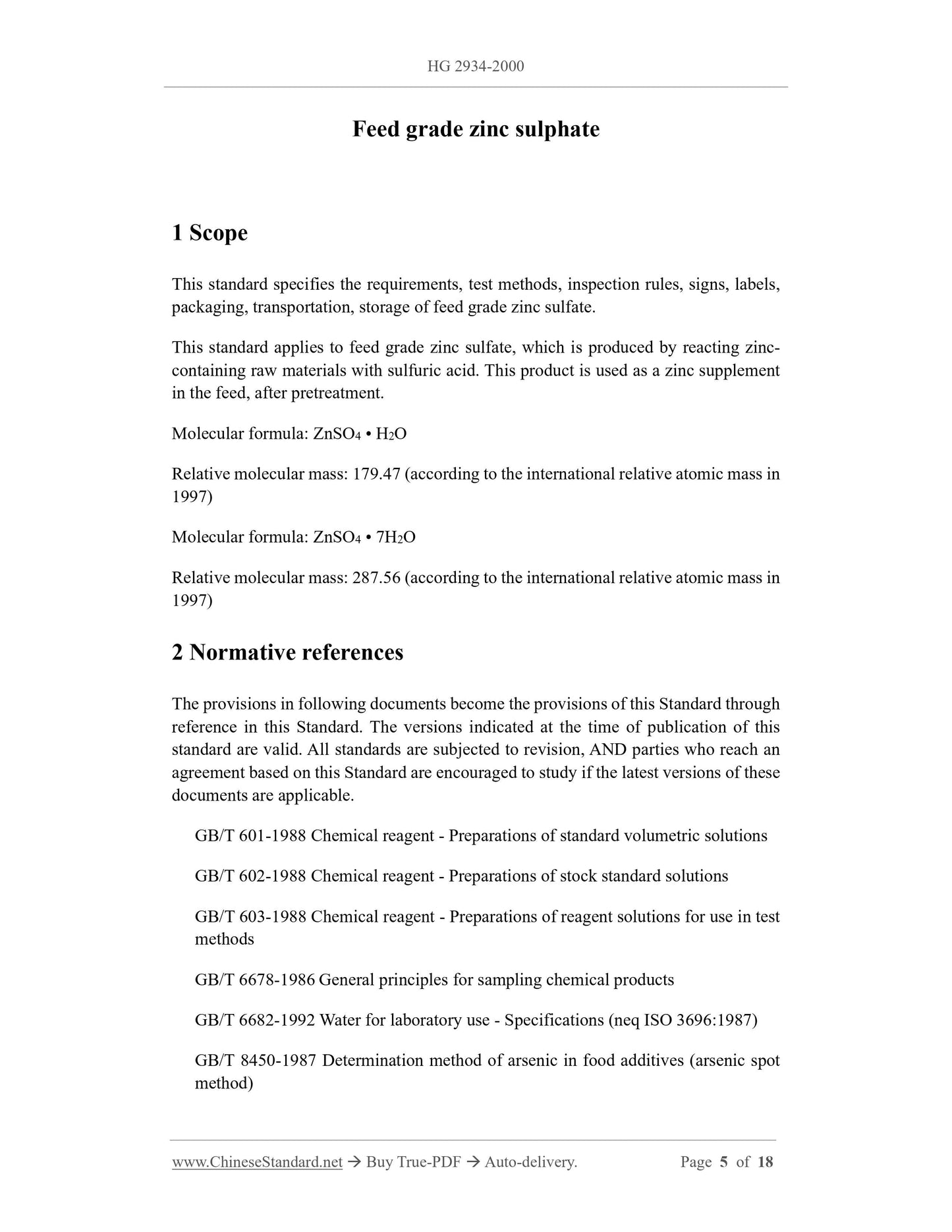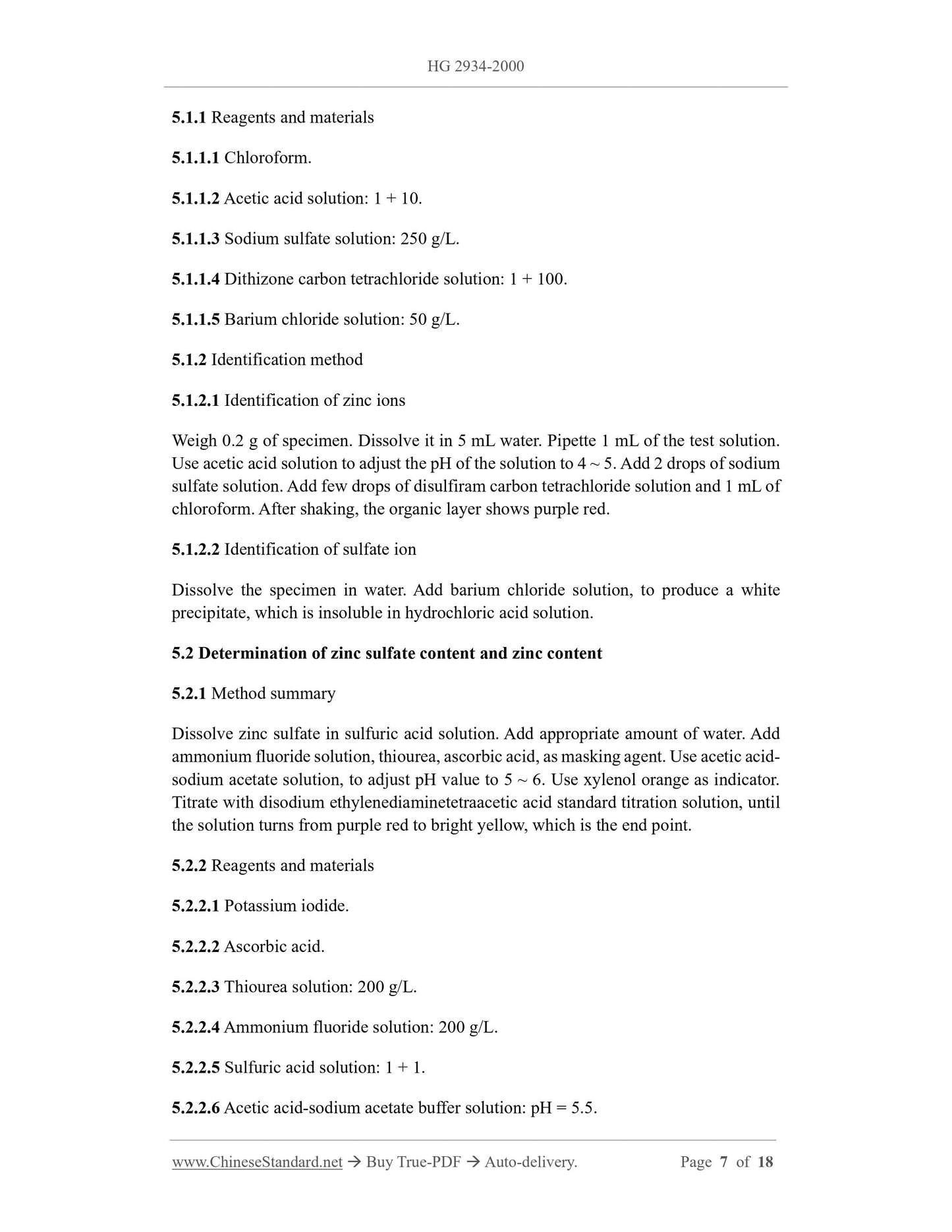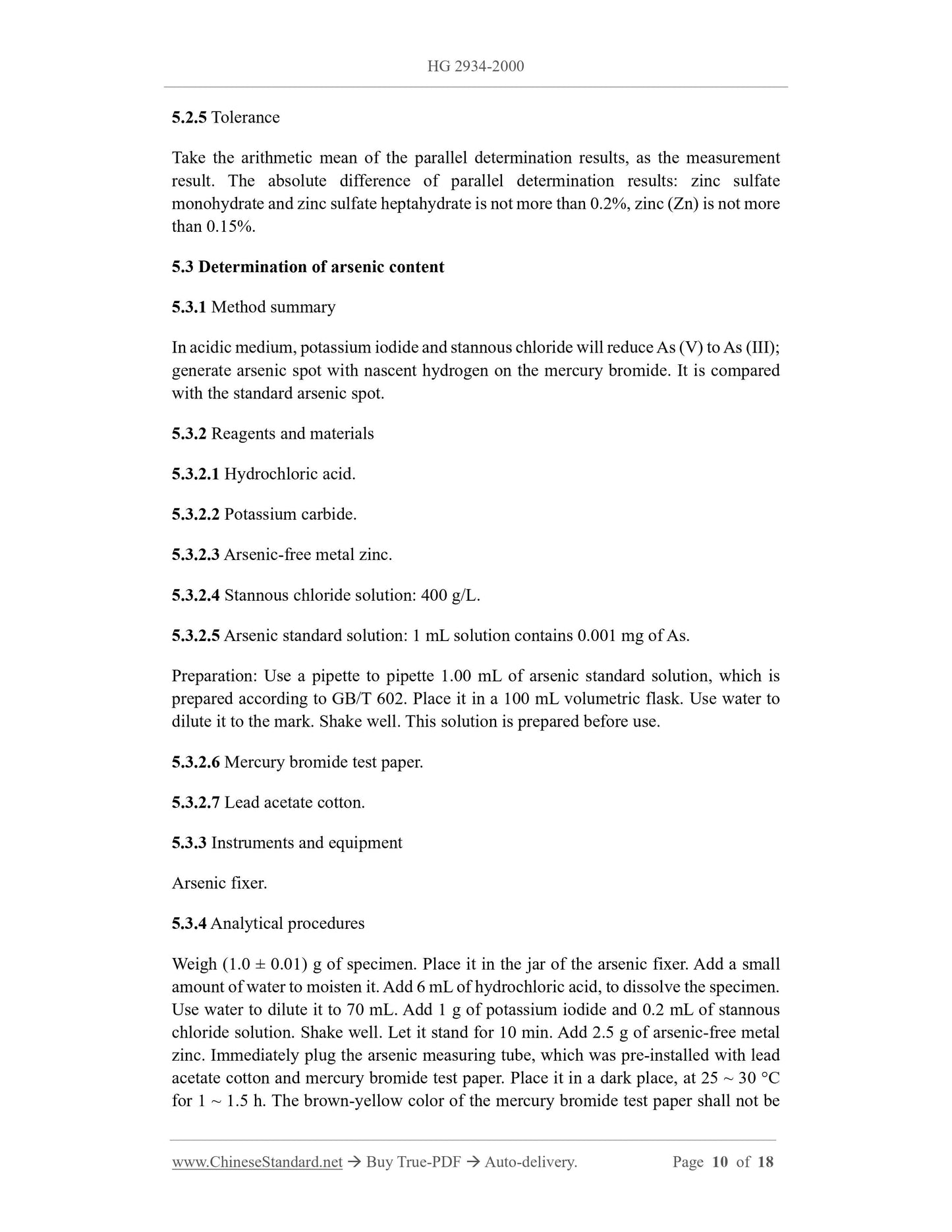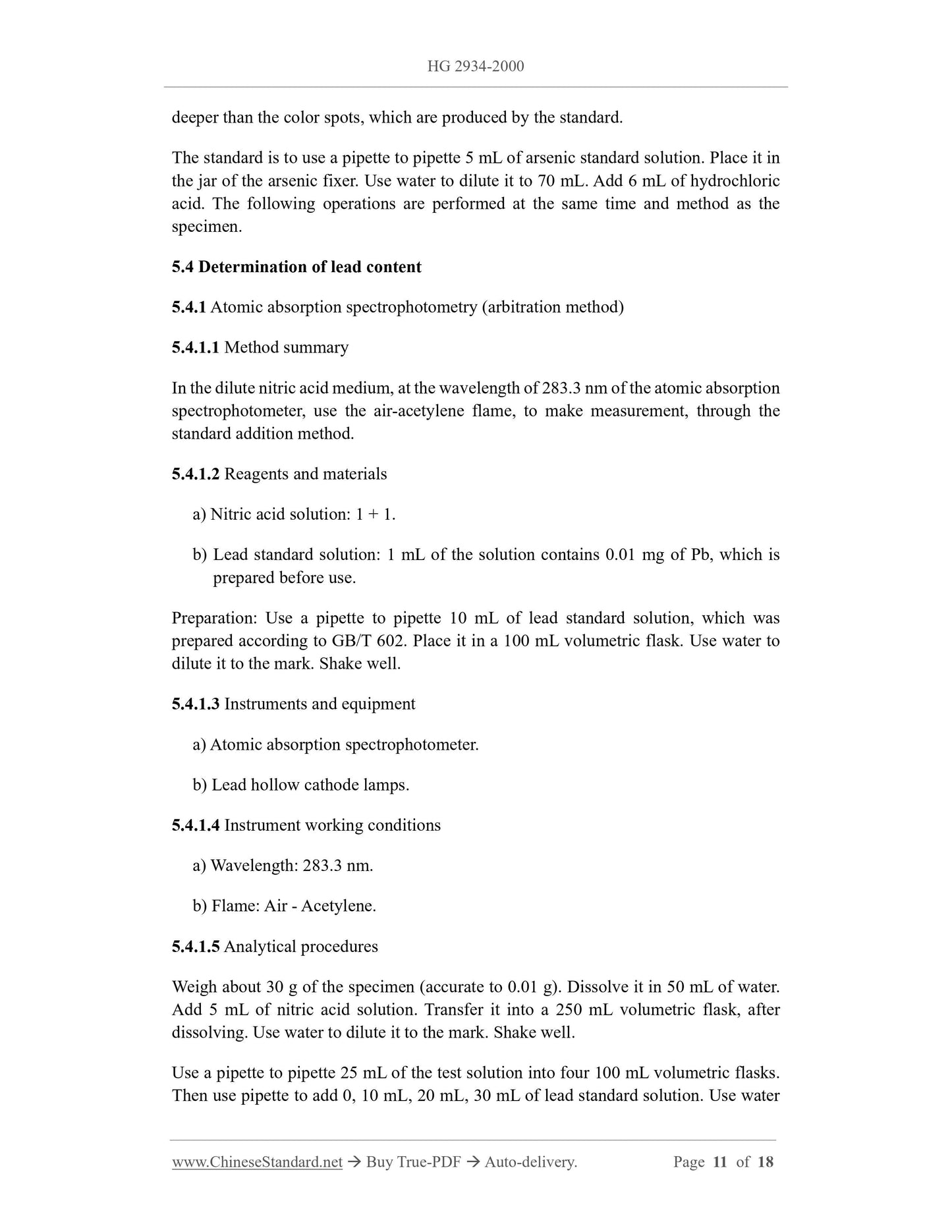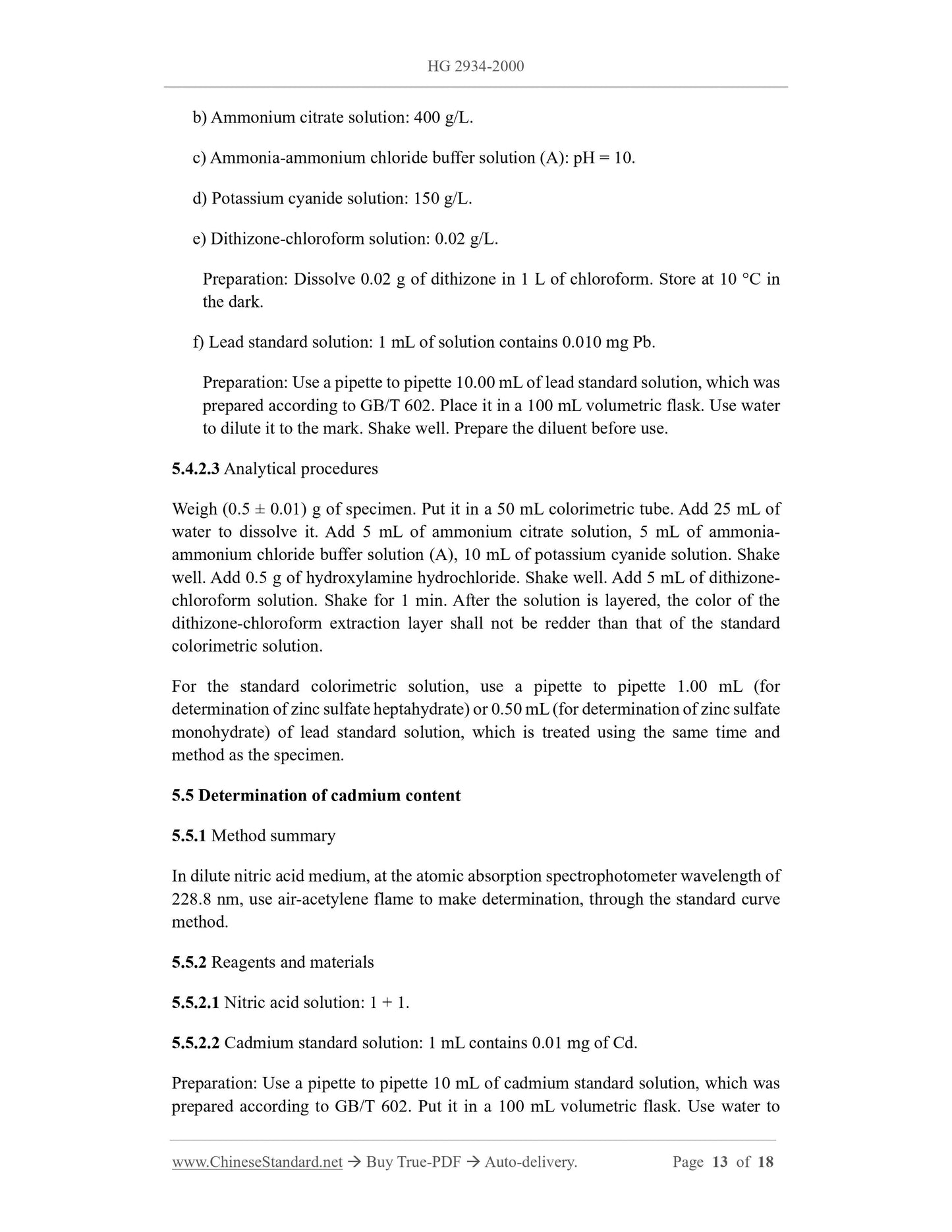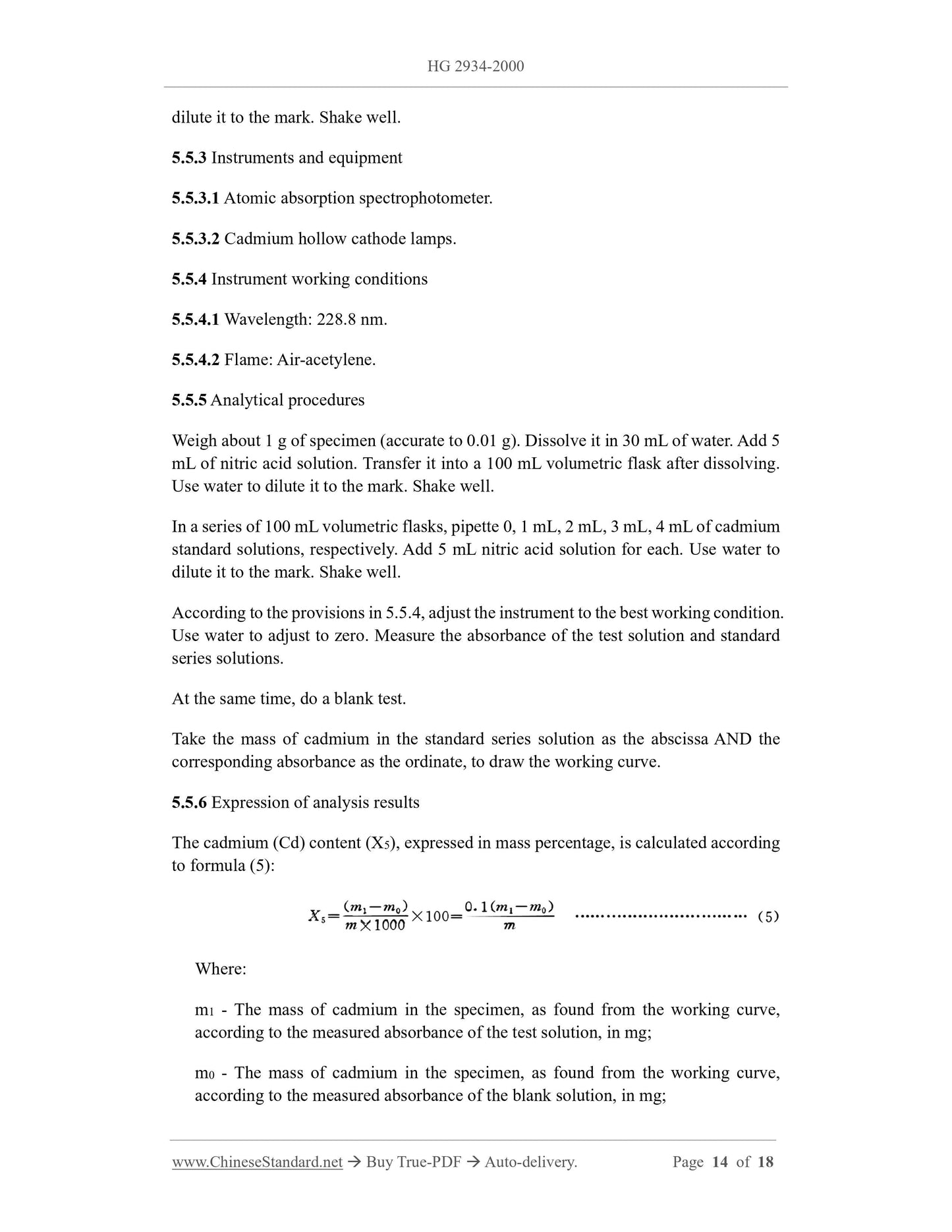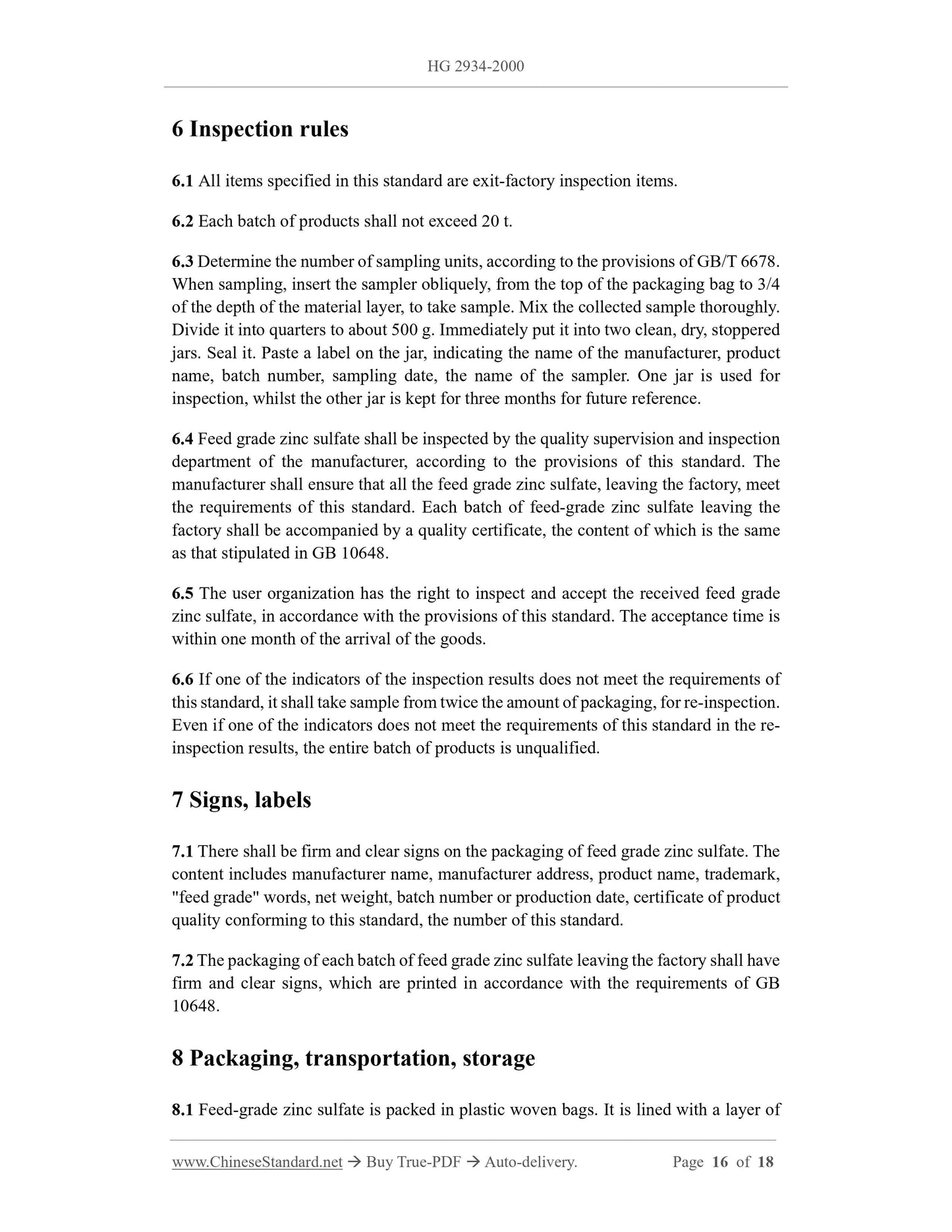1
/
of
9
www.ChineseStandard.us -- Field Test Asia Pte. Ltd.
HG 2934-2000 English PDF
HG 2934-2000 English PDF
Regular price
$130.00
Regular price
Sale price
$130.00
Unit price
/
per
Shipping calculated at checkout.
Couldn't load pickup availability
HG 2934-2000: Feed grade zinc sulphate
Delivery: 9 seconds. Download (and Email) true-PDF + Invoice.Get Quotation: Click HG 2934-2000 (Self-service in 1-minute)
Newer / historical versions: HG 2934-2000
Preview True-PDF
Scope
This standard specifies the requirements, test methods, inspection rules, signs, labels,packaging, transportation, storage of feed grade zinc sulfate.
This standard applies to feed grade zinc sulfate, which is produced by reacting zinc-
containing raw materials with sulfuric acid. This product is used as a zinc supplement
in the feed, after pretreatment.
Molecular formula: ZnSO4 • H2O
Relative molecular mass: 179.47 (according to the international relative atomic mass in
1997)
Molecular formula: ZnSO4 • 7H2O
Relative molecular mass: 287.56 (according to the international relative atomic mass in
1997)
Basic Data
| Standard ID | HG 2934-2000 (HG2934-2000) |
| Description (Translated English) | Feed grade zinc sulphate |
| Sector / Industry | Chemical Industry Standard |
| Classification of Chinese Standard | B46 |
| Classification of International Standard | 65.120 |
| Word Count Estimation | 9,911 |
| Date of Issue | 2000-06-05 |
| Date of Implementation | 2001-03-01 |
| Older Standard (superseded by this standard) | HG 2934-1987 |
| Quoted Standard | GB/T 601-1988; GB/T 602-1988; GB/T 603-1988; GB/T 6678-1986; GB/T 6682-1992; GB/T 8450-1987; GB 10648-1999; GB/T 13080-1991 |
| Regulation (derived from) | Engineering (2010) No. 77 |
| Summary | This standard specifies the carbon steel and stainless steel rotary cover plate welded flange into the hole of the type, the basic parameters, size, technical requirements and related restrictions. This standard applies to nominal pressure PN is less than or equal to 0. 6MP a, the maximum operating temperature and the corresponding working pressure without impact restrict the category of the material within the range specified in Table 3-2 Rotary welded flange cover plate into the hole. |
Share
